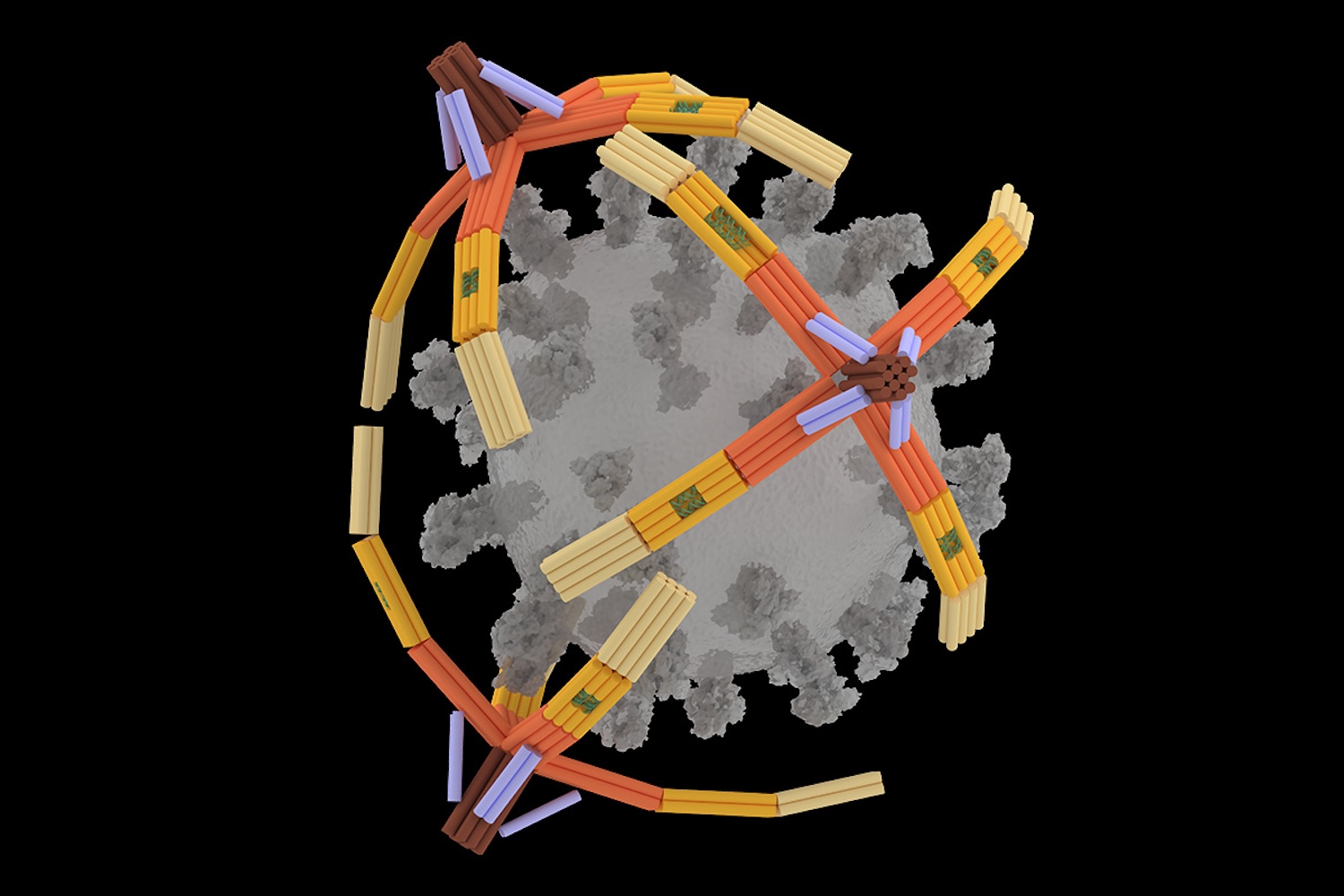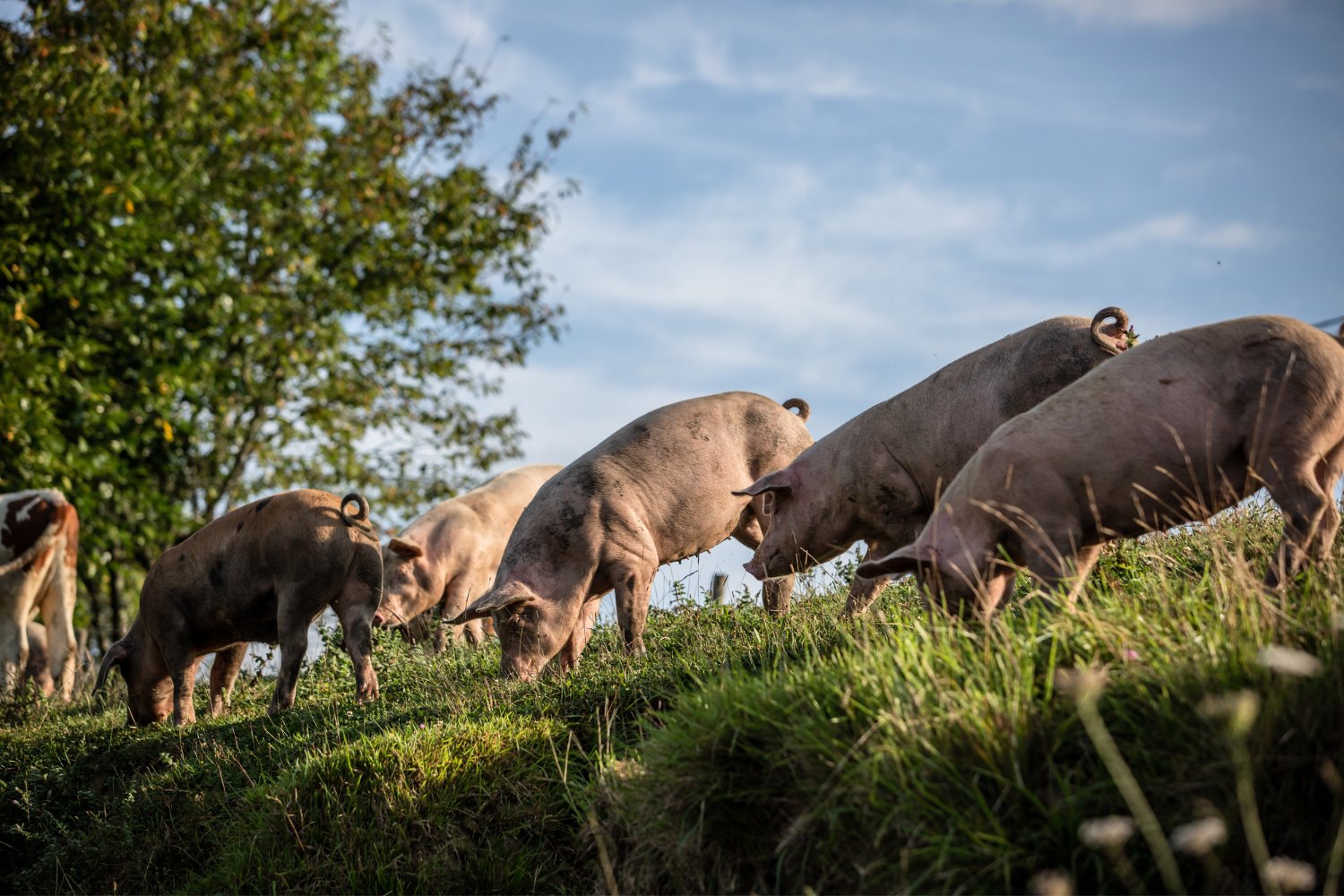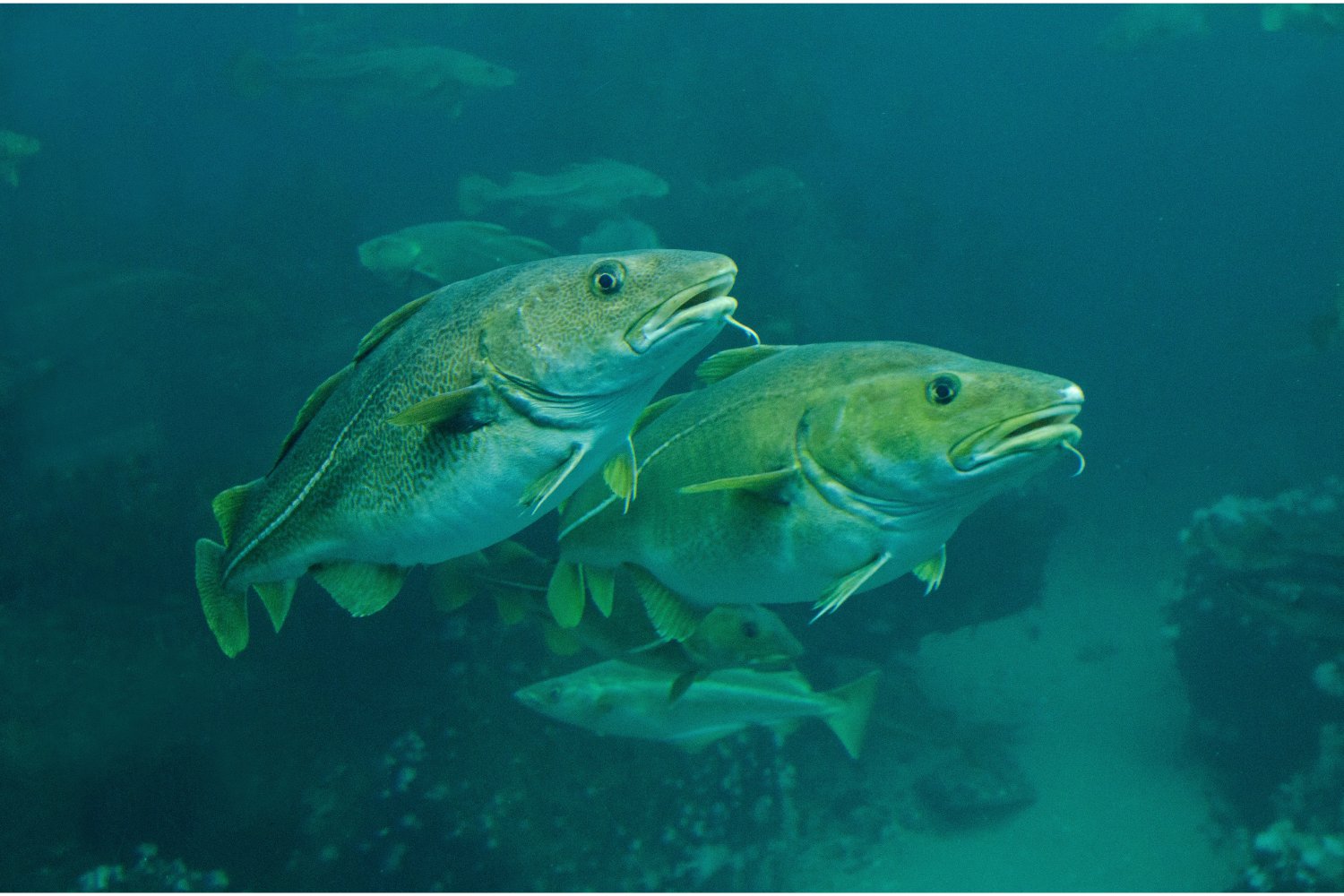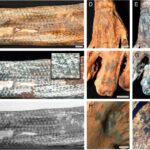Passing fields of soy, corn and towering bleach-white windmills fanning out across windy plains, I arrive early one morning somewhere between Chicago and Indianapolis at a place that promises “sow much fun”.
The Pig Adventure, housing 3,000 sows and producing 80,000 piglets per year, sits alongside a 36,000-cow Dairy Adventure, with murmurings of further adventures for fish and chickens. This is “agro-Disneyland”, a place where rides have been replaced by adorable pink piglets and 72-cow robotic milking parlours (or cow “merry-go-rounds” as our guide calls them).
I line up next to a retired couple and an extended family with three freckled kids from Chicago, and our tour starts inside a sleek lobby outfitted with touch-screens and billboards illuminating the intelligence of pigs – as smart as three-year-olds, better at learning tricks than dogs, outranked in brainpower only by chimps, dolphins and elephants. We pass through a mock shower where animated bubbles slide down the walls to clean us (a feeling akin to being ensconced inside a car during a carwash) and into a wide, carpeted corridor. Everything smells as pleasantly antiseptic as a dentist’s office. Arriving at a viewing area, we ogle some real pigs through thick, soundproof panes of glass.
Here, visitors can see for themselves how, even in today’s global, supermarket era, ‘Concentrated Animal Feeding Operations’ – or factory farms, as they’re better known – can continue to operate on gargantuan scales while still paying heed to animal welfare. Places like The Pig Adventure exist because this clash of practical and moral needs is becoming a massive consumer sticking point.
The fact is, with a global population projected to reach 9 billion by 2050, meat-eating is skyrocketing – meat production has tripled over the last four decades. We need to produce a lot of meat, considerably more than we do today, to meet demand – but we also want to reduce animal suffering. Conscientious carnivores may harbour romantic visions of returning to an earlier, more wholesome way of life, where animals live outdoors surrounded by rolling hills and lush woodlands. But such ideals are expensive and impossible to scale up, leaving today’s farmers asking how, or even if, we can both mass-produce animals and treat them right.
Before moving to the farm, pigs roamed the forests, foraging several kilometres a day for food. Females lived with a few other related sows and their piglets in small groups. Boars were solitary and approached only when they could sniff out a sow in heat. The resulting litters were relatively small at six to seven piglets. Like today’s feral pigs, these animals were fierce and agile, unlikely candidates for domestication. But the animals had one great boon: they made excellent garbage disposal units, eating up scraps and refuse that might otherwise rot. That perhaps explains why, several thousand years ago, humans in China and Europe independently domesticated the pig.
The Chinese, who needed land for rice production and had limited sources of manure fertiliser (from cattle for instance), moved pigs into sties some 8,000 years ago, where they ate out of troughs, grew plump, and multiplied. In Europe, though, pigs stayed semi-feral and continued to roam the forests, feeding on less desirable foods like acorns and beechnuts, a practice known as pannage.
In the early 1600s, urbanisation hit Europe. Lucky pigs were fattened on brewery and dairy waste, and later potatoes and beans, reducing the need for pannage. As Charles Darwin once observed, the European farmers began selecting for larger pigs – subsequent genetic analysis has revealed that the Western pig developed two to three extra vertebrae. Thus the Europeans put their efforts into getting a lot of meat from one animal, while the Chinese focused on maximising the number of piglets born to a single sow.
City pigs, however, remained rare. Up until the 1700s, most pigs stayed in the village and helped sustain rural families. But that way of life was fading fast. “Although it seems unlikely pork would have disappeared altogether from the English diet, without improved breeding it might very well have dwindled into more of a traditional country dish like goat or rabbit,” writes historian Sam White in his illuminating essay on the pig saga, ‘From globalized pig breeds to capitalist pigs: a study in animal cultures and evolutionary history’.
That improved breeding came in the form of a fat, black pig from China. Nobody knows how that first Chinese pig wound up in Europe consorting with local pigs, but genetic evidence dates that momentous encounter at around 1700. Initially, these interracial couplings vexed the Europeans, who warned farmers against breeding their pigs with the Chinese interloper. Soon, though, the Agricultural Revolution made growing plants and animals year-round paramount. European farmers, stuck to a seasonal fattening cycle, began to realise the Chinese pig’s potential.
By 1760, The Farmer’s Compleat Guide grudgingly noted: “If the farmer has good convenience for feeding them, the most profitable kind is the common [European] hog which is large bodied and long legged; but this requires not only the best food but the greatest care. The small low bellied [Chinese] hog is hardier and feeds on any thing; it produces a great many young, and is in many cases preferable to the other.”
True acceptance came soon thereafter when the offspring of these pairings were observed to fatten faster than the European hog alone and produce considerably more offspring. Soon enough, the modern pig, a European–Chinese cross, thundered onto the scene, ravenous for food and sex.
Pig Adventure staff bring newborn piglets into a viewing room in the farrowing barn to answer visitors’ questions about newborns and the birth process.
Clad in borrowed blue overalls and rubber shoes, I wade into a sea of some 200 pregnant sows. One chews my shoe. Others brush up against me as they wander around the pen, threatening to knock me off balance with their 500-pound heft.
An electronic feeding station sits in the middle of each pen and when a sow saunters in, a door closes behind her to keep others out. A machine inside the station reads the 15-digit tag on the sow’s ear to see whether or not she has eaten for the day and, if not, how much food she should receive. Without this machine, the sows, who are very hierarchical, would fight over access to the communal trough, explains Thomas Parsons, the veterinary researcher who directs the Swine Teaching and Research Center at the University of Pennsylvania School of Veterinary Medicine. Pigs who aren’t eating wander the grounds or congregate inside the large cubbies that line the pens like giant shoeboxes.
Last summer, Parsons helped install a similar system on a much grander scale at The Pig Adventure. Those pens, which house 85 to 200+ sows apiece, are viewable from a circular observation room high above the action and resemble rows of greenhouses filled with pigs instead of plants. A farm manager I spoke to referred to the pens fondly as “concrete pastures”. But there’s more to the pens than meets the eye, says Parsons. Those cubbies let sows of the same clique hang together and keep others out. The long pathways let sows escape the onslaught of a bully.
Parsons clearly isn’t keen on the phrase “concrete pasture” and says he avoids the term “factory farm”. “Words matter,” he tells me on several occasions. His caution stems from a position between two polarised communities: animal farmers, who support their families by putting meat on other people’s tables, and animal advocacy groups concerned by conventional farming practices – zero access to the outdoors, cramped cages, painful procedures like cutting off tails, beaks and testicles, typically without painkillers.
Parsons grew up on a pig farm in Massachusetts and his family descends from a long, long line of pig farmers. “The second best thing you can be as a farmer’s son is to be a veterinarian. The first best thing would be to come home and take over the farm.” His brother freed him from that duty, and after veterinary training Parsons went on to gain a doctorate in neuroscience. For a long time, he worked in the basic sciences, using animal models to better understand human hearing and deafness. But a fellowship in Germany and trips to farms around Europe kept the plight of pigs and pig farmers in Parsons’s orbit. Eventually, he decided that others could carry on the ear work but he was less sure that anybody would improve the living conditions of gestating sows in a way that was also financially viable for both the farmer and the consumer.
For several years, Parsons has been talking to pig farmers around the USA about how to transition from gestation crates – two-foot by seven-foot enclosures that house a pregnant sow individually, protecting her but restricting her movements to the extent that she cannot turn around – to the pens we see before us. He and others at the University of Pennsylvania created the pen prototype over a decade ago, adapting European practices to meet the needs of North American farms. The design now makes up about 2 per cent of the US pig housing stock.
“Animal advocacy groups have been very successful in reducing sow animal welfare to whether a sow can turn around,” Parsons says. That’s why, despite the prevalence of additional welfare problems on pig and other animal farms, Parsons has opted to focus on doing his part to find real alternatives to gestation crates – a starting-point in a larger conversation.
In 1539, European hogs stepped onto American soil, accompanying the conquistador Hernando de Soto. Colonialists brought over more of the same stock in the early 1600s. With labour in short supply and land plentiful, these early settlers let their pigs roam free, whereupon they quickly turned feral. By the late 1700s, though, breeders in Philadelphia had begun selectively breeding Chinese pigs imported, in all likelihood, from Europe. Meanwhile, Midwesterners were facing a surplus of corn (some things never change), but in those pre-refrigeration days, they couldn’t ship it long distances without it spoiling. So they began fattening pigs on corn and shipping them instead. “In a region too remote to export crops directly, the animals concentrated, according to one quip, ‘fifteen or twenty bushels of corn on four legs,'” writes Sam White. In 1816, the Ohio Valley Shaker Society mixed local pigs with Chinese pigs ordered from Philadelphia. Pretty quickly, this new hybrid pig, with all its desirable qualities, became America’s pork.
By the 1940s, Americans were reeling from the Great Depression and then World War II. Soldiers left as small-town boys and came back as big-city men loath to return to the family farm. A shrinking agrarian population, coupled with a newfound fear of hunger, meant the country was ripe for moving Henry Ford’s automobile assembly line – a mix of machines, tools and employees working seamlessly in sequence – over to the farm. After observing the Chicago meat-packing operations, Ford himself once called slaughterhouses “disassembly lines”.
Electric lights and climate control let farmers move pigs indoors, where they occupied less space and ate less food. Antibiotics kept diseases in check. But lots of pigs in small spaces invariably led to problems. Piglets’ tails were cut off to prevent tail-biting and the males were castrated to stop them from developing ‘boar taint’, chemical compounds that alter the flavour of meat (people describe the taste as onion-like, perspiration-like, urine-like, bitter, and faecal). Meanwhile, breeding females, still wired for a more solitary life in the wild, began fighting over territory and food. Less aggressive sows grew thin and sickly.
When in the 1960s gestation crates emerged, they were seen as a welfare advance. Sows received personalised care. Injuries dropped. Everybody ate well. And piglet counts increased. The pig factory had reached its apogee.
“We gave the animals what they needed to flourish and they gave us their products and occasionally their lives, but while they lived, they lived decently,” says Bernard Rollin, a philosopher with expertise in animal rights at Colorado State University in Fort Collins, who calls this the “ancient contract” between man and animal. Until recently, the farmer remained bound to this contract, his adherence secured by the simple truism that a sick animal was less productive, and therefore less valuable, than a healthy one.
Since factory farming, however, that contract has been severed. Thanks to antibiotics, fortified feed and indoor environments far removed from the vagaries of nature, it’s possible to get a lot of milk or meat out of sick and miserable animals. In his essay ‘This Ain’t Agriculture’, Rollin tells the story of the modern-day dairy cow, bred almost exclusively for milk production. This has resulted in frequent mammary gland infections known as mastitis, serious reproductive problems and chronic lameness. Whereas in 1957 a typical dairy cow produced between 500 and 600 pounds of milk over a post-natal lactation period, she now produces close to 20,000 pounds. Consequently, today’s burnt-out dairy cow survives just over two lactations, compared to between 10 and 20 lactations in earlier years. She is, writes Rollin, “a milkbag on legs, and unstable legs at that”.
In 1964, animal-rights activist Ruth Harrison published a book called Animal Machines,in which she vividly described the lives of animals on these new farms. Her book prompted the British government to form the Brambell Committee to investigate the lives of animals raised under intensive confinement. A year later, the committee set out five freedoms, calling upon farmers to address both an animal’s physical andpsychological wellbeing:
Freedom from Hunger and Thirst
Freedom from Discomfort
Freedom from Pain, Injury or Disease
Freedom to Express Normal Behaviour
Freedom from Fear and Distress.
Although those five freedoms lacked teeth, as a theoretical framework they were groundbreaking. Until that point, farmers had focused almost exclusively on protecting their animals from sickness, starvation, extreme hot or cold and the like, what Parsons terms “negative affective states”. Now they were tasked with bolstering positive affective states; they had to make sure an animal was of sound body and mind. “It’s easy to see bad welfare if an animal is injured, if it’s skinny, or cold… but how do you know if it’s happy?” says Parsons. “That’s the million-dollar question.”
If under the rubric of the ancient contract a pig’s happiness was measured in its ability to live as close to nature as possible and go about its piggy life until that fated moment, this new contract, drafted in an age of mental health care and megalithic animal farms, adds a wholly new dimension, one that leaves the farmer in a difficult position. Emphasising welfare too much could make it more expensive for farmers to raise pigs and ultimately drive up pork prices. That could send consumers scurrying to buy cheap, imported meat.
What’s more, if the Western world going free-range or grass-fed or adopting some other humane treatment means making meat production less efficient, the global supply of meat will be reduced. And that, says Parsons, takes “food out of somebody’s mouth somewhere else in the world”. Buying humanely raised pork
Jon Hoek is a bear of a man. Dressed in jeans and a checked flannel shirt, he is quick to press upon me the virtues of the farmer. Nobody “chooses this job because it’s glamorous or you make a lot of money,” says Hoek, vice president of pig production at Belstra Milling, the farm behind The Pig Adventure (an umbrella company known as Fair Oaks runs the tourism arm of the Pig and Dairy Adventures, while farmers retain control of production). “You’re at the mercy of weather, you’re at the mercy of disease, at the mercy of markets, at the mercy of political forces. It would be a lot easier to choose another vocation, it seems.”
Rather, many farmers feel called upon to meet the needs of a growing population. Belstra Milling, Hoek says, has “chosen to be high-output, low-cost because [we] want to reach the guy in Dubai… in Bangkok, in Liberia, with a piece of meat that he can afford”.
We’re sitting in the Fair Oaks gift store surrounded by fuzzy stuffed pigs and cows, cheese and ice cream made with milk from Dairy Adventure cows, and cookbooks with titles like I Love Bacon. When Fair Oaks approached Belstra about building a farm into The Pig Adventure, Hoek and his colleagues realised this was a chance to provide consumers with a window onto the source of their meat. He sees the desire for such a window as stemming directly from the fact that in the USA a mere 2 per cent of the population produces food for the other 98 per cent. This has opened the door for criticism from animal-rights organisations like People for the Ethical Treatment of Animals (PETA) and Mercy for Animals, groups known for planting their members as workers on animal farms and shooting secret videos of the animals’ living conditions.
By cherry-picking what they show and leaving out explanations of why some seemingly barbaric practices are rote, Hoek says the activists have thus far bested the farmers in selling their cause to the public. The activists’ ultimate goal is to “get rid of animal agriculture,” says Hoek, who is pushing fellow farmers to fight back and show the humane side of the farming business. “If you’re proud of what you do,” he says, “you’re going to be transparent.”
With the stakes so high, Belstra Milling made a critical decision to switch The Pig Adventure over from gestation crates to pens (pigs on the company’s five other farms continue to gestate in crates). And as Hoek, Parsons and others well know, gestation crates have emerged as a touchstone animal welfare issue. The European Union completed a ban of these crates in January 2013. New Zealand is poised to follow suit in 2015 and Australia in 2017. In the USA, where corporate pressure rather than legislation tends to drive changes in the food industry, scores of companies, including Smithfield Foods – the largest pork producer in the world – and McDonald’s, have pledged to eliminate gestation stalls from their supply chains.
“The transition has been difficult,” Hoek says. He pulls out his smartphone and launches the calculator app. Before the switch, Hoek says, an average sow successfully birthed and nursed 31 piglets per year. Now, however, her success rate has dropped to 29 piglets, meaning each sow produces 308 less pounds of pork annually, or 1,232 fewer quarter-pound servings.
Of course, shifting sows from individual to group housing comes with some challenges. In crated systems, sows have limited interactions and never get the chance to fight. But in a pen, scuffles are a part of life. I’d seen so myself at Parsons’s lab.
On the day I’d visited, ten sows, marked by two orange stripes across their flanks, re-entered the pen after several weeks of birthing, nursing and getting pregnant again. They bounded across the slats separating the pen from the gestation crates, where they’d been barricaded for a week during the artificial insemination round. For several minutes, all was quiet. Then suddenly, two Orange Flanks, each now uncomfortably positioned near the bottom of the pecking order, began butting heads like rams in battle. Loud snorting ensued. Soon one sow retreated. The other, emboldened by her triumph, struck up another fight. Surprisingly, this alpha Orange Flank scored another win. She was moving on up.
Such fights make for tricky business. Reintroductions must occur before the embryo implants into the uterine wall – about two weeks after insemination – otherwise the sows can miscarry. With large systems like that at The Pig Adventure, it can be challenging to prevent the pigs, who are constantly moving throughout the system (Parsons calls it a “big chess game”), from fighting when their embryos are particularly vulnerable. Parsons says some farmers who have switched over to these pens keep sows in gestation crates for five or six weeks after insemination, instead of one, to thwart the problem altogether, but that comes with a potential welfare trade-off.
He suspects the fighting can provide some sows with stimulation, a way to express their natural urge for hierarchy, but at the possible risk of pain and injury. His team has also noted that sows in the pen typically enter the feeding station in the same order, with dominant sows getting first dibs. Once you get to a large enough group, the aggression seems to go down some because the hierarchy is less rigid. “It’s just too hard to remember who you don’t like,” he says.
Parsons acknowledges that production levels may initially fall as farmers learn the nuances of the new system, but they’ll ultimately rebound. According to Hoek, 94 per cent of pigs carry their piglets to term at Belstra’s best farm, but at The Pig Adventure that rate has dropped to 88 per cent. Hoek concedes that The Pig Adventure will eventually regain its high birth rate. But he still questions whether the switch makes financial or moral sense. Animal rights activists, he says, claim that “it’s morally reprehensible to confine animals because they’re sentient beings”. But, says Hoek, in our society, animals and people are not moral equivalents.
“You are more important to me than a pig,” he tells me (shucks). “In creation, or in a Biblical world view, God created man in his own image and he’s special. He’s what they call the crown of creation and he was appointed by God to rule creation to be a steward in a way that is consistent with God’s character showing kindness and care… not abusing the animals but stewarding them in a way that is good for the animal and good for the human.”
For Hoek that means bringing meat to the masses. A starving child in Africa needs “social justice through agricultural efficiency not moral elitism,” he says. After all, he says, given a choice, that child “is probably not going to ask for beans”.
Over the past century, we have selected for white-haired pigs to avoid dark hairs in our sausage and lean pork. But more sweeping evolutionary changes to the domestic pig – like adding on extra vertebrae – stopped circa 1800. What if, Parsons and others have begun to wonder, we could find pigs more suited to communal housing? “The industry for 30 to 40 years has been selecting for animals to perform in some type of stall or crate,” says Parsons. “I can see where we might be inadvertently selecting for traits that would be successful in a stall but problematic in a pen.”
This has some precedent. Some 30 years ago, Bill Muir, a geneticist at Purdue University in Lafayette, Indiana, started looking into animal welfare on chicken farms. Then as now, many chickens lived in battery cages, enclosures the size of a filing cabinet that could hold up to a dozen birds. The chickens, who like to peck everything, began pecking each other – occasionally to death. That led to the acutely painful practice of beak-trimming on day-old chicks. Muir suspected he could build a better battery-cage chicken, one that didn’t peck at all.
Muir thinks that any observable trait can be manipulated. “If you can measure it, we can change it” is his motto. He began to wonder: what if we shifted from looking at chickens as individuals to looking at them as groups? That’s sort of how we view clonal strands of trees or honeybee colonies. So he started off with several 12-bird battery cages, each housing sister birds with intact beaks, and isolated calmer family lines, selectively breeding along those lines.
The results were astounding. After just six generations, annual mortality among non-beak-trimmed birds, which had started at an astronomical 68 per cent, dropped below 9 per cent, the same level seen in single-bird cages. In a subsequent study of Japanese quails, Muir found that selecting for larger birds actually decreased overall meat production. Even after 25 generations, quails selected for growth had a lower weight and higher mortality from cannibalism, on average, than the starting population. Looking only at the success of an individual animal often works against the wellbeing of the group and that can drive down overall success, says Muir, who thinks socialism is a good blueprint for animal farms.
Despite these findings, most conventional breeders still only look at an individual’s genetics and not at how that individual interacts with the larger group. With the push towards group housing for chickens and pigs growing stronger, Muir, along with Piter Bijma, a geneticist at Wageningen University in the Netherlands, has been creating statistical models that quantify the influence of a single animal on her groupmates.
Recently, the Wageningen team tested their models on actual pigs. After piglets are weaned, they live in communal pens until they reach slaughter age. On most commercial farms, pigs are periodically regrouped with unfamiliar pigs as a standard management practice, but this can lead to fighting and aggression. The researchers estimated a pig’s likelihood of aggression from the models, and then selectively bred them so that half the offspring were expected to enhance the growth of their penmates and the other half were expected to hinder growth. After weaning, the resulting 480 piglets were divided and housed in groups of six.
The model proved right: pigs born into families that hurt the growth of penmates (i.e. they grew large at the others’ expense) were much more aggressive – especially when they were removed and then reintroduced to members of their group. “We have the tools to breed for families that show less [aggression such as] tail-biting,” says Bijma. The larger issue, he says, is that practices like tail-docking – a common “solution” to thwart aggression – obscure the fact that many livestock animals remain too wild, which can trigger aberrant behaviour on the farm. “It’s not at all to the animal’s benefit to have [so many] characteristics of its wild ancestor,” Bijma says.
In the maternity ward of The Pig Adventure, I watch thousands of piglets nap under heat lamps or suckle fervently at their mamas’ teats. The mamas are imprisoned inside metal bars – contraptions known as farrowing crates – and lie on their sides with their teats facing outward. In a crate close to the observation glass, a sow delivers a piglet, which comes out covered in blood and slime. The piglet is scrawny and weighs just a few pounds. The bars will prevent this quarter-ton mama from unwittingly squashing her baby, or the six other piglets already tottering about her enclosed cubicle.
If the story of gestation crates is any guide, once consumers begin speaking out, other practices on the pig farm could soon come under fire. Recently, Tyson Foods, a major pork supplier, called on its producers to research alternatives to castration and tail-docking. Hoek dreads the day the activists turn their attention to farrowing. “It would be a devastating travesty of animal care for piglets if farrowing crates were taken away,” he says. He’s right, at least for now. When a researcher in Parsons’s lab removed those metal bars, a fifth of the piglets died, double the rate seen on conventional farms.
Yet decades ago, the thought of returning sows from crates to a pen seemed outrageous. Why revert back to a system of winners and losers when every pig could grow equally fat inside a crate? Then the ethics of the day shifted. Today, American farmers ready to upgrade their facilities would be well advised to consider switching from crates to pens. For even if they’re leery of pens, more and more companies are heeding consumer calls to phase gestation crates out of their supply chains. You can raise pigs any way you want but if nobody wants to buy them, it’s not a very good business model.
As I look on, a worker dons a rubber glove up to her shoulder and slathers it in gel. She then puts her hand up a sow’s vagina – to check for more piglets, a guide near me explains. Some theorise that the unnatural conditions of the pig maternity ward – human interference, artificial lights and the din from thousands of squealing piglets – prevent these mamas from responding to their babies’ distress calls. If so, why not redesign the ward? Or, what about selecting for “better” mamas? It took Bill Muir six generations to create chickens that stopped pecking each other to death. How many generations would it take to breed sows – whose pregnancies last around 115 days – that don’t roll over their piglets?
Farm animals inhabit designer homes and bodies that we humans have tweaked, and continue to tinker with, across millennia. We are, without exaggeration, the creators of their world, and they our greatest resource – and heaviest burden. If they suffer, does the fault lie in our failure to innovate?
As I’m exiting the maternity ward, one of the workers comes up to the glass carrying a newborn piglet that has been scrubbed clean. The family from Chicago crowds in for a closer look. What should we name it, the worker asks through a microphone. The youngest freckled Chicagoan suggests “Liam” and the matter is settled. The worker returns the little piglet to his mama and we all disperse. On my way out, I peer into the glass one last time, but Liam has been lost in the throng.
Contributors
Author: Sujata Gupta
Editor: Mun-Keat Looi
Fact checker: Simone Apel
Copyeditor: Tom Freeman
Photographer: Lauren Lancaster (special thanks to The Pig Adventure at Fair Oaks Farm)
Art director: Peta Bell
References
Sam White’s essay ‘From globalized pig breeds to capitalist pigs: A study in animal cultures and evolutionary history‘ (2011).
Bernard Rollin’s essay ‘This Ain’t Agriculture’, published in the Routledge Handbook of Human-Animal Studies (2014).
Ruth Harrison’s book Animal Machines (1964).
Bill Muir’s paper on the selection of chickens, ‘Group selection for adaptation to multiple-hen cages: selection program and direct responses‘ (1996).
Wageningen University article on efforts to breed social animals.
This article first appeared on Mosaic and is republished here under Creative Commons license. Mosaic is dedicated to exploring the science of life. Each week, it publishes a feature on an aspect of biology or medicine that affects our lives, our health or our society; it tells stories with real depth about the ideas, trends and people that drive contemporary life sciences. Mosaic is published by the Wellcome Trust, a global charitable foundation that seeks to drive extraordinary improvements in human and animal health. It covers subjects that fit with the Trust’s mission and vision, but isn’t limited to the research the Trust funds.
Image by The Pug Father, Mike, Tambako The Jaguar, Ernest Figueras, chuddlesworth, Cindy Cornett Seigle and Compassion in World Farming under Creative Commons license.













